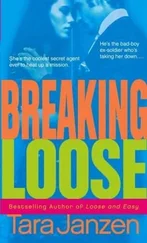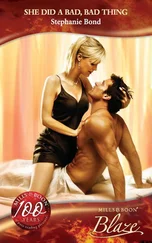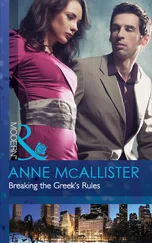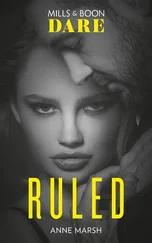Many contemporary series, especially those on the basic cable system, ignore the cold open with the intention of having more narration time before the first break. Consequently, those dramas have more time for the setting out of the plots and conflicts of the episode. Nevertheless, in the case of AMC dramas, the initial presence of a teaser, which in most cases does not exceed four minutes in length, imposes the need for a beginning capable of interesting and intriguing the viewer with almost no time for exposition. As Pamela Douglas (2007) pointed out, the cold open “exists to grab viewers faster than the enemy, which is the remote. The notion is to open the hour with an action, image, situation or character that provokes enough anticipation to keep viewers through the title sequence and into the first act” (78). “It’s intended to pull you in,” argues Alex Epstein (2006, 66).
Among all AMC series, Breaking Bad claimed itself early on as the most imaginative in its conception of the cold open or teaser. Thereby, it is easy to find fan-made videos on the Internet [2] There are several videos on YouTube dedicated to Breaking Bad ’s cold opens. For example, here is a compilation of all season one opening scenes http://www.youtube.com/watch?v=N2Anq0zHQK0 . More teaser compilations can be found at http://blogs.indiewire.com/pressplay/sheila-omalley-breaking-bad (seasons one and two) and http://blogs.indiewire.com/pressplay/sheila-omalley-breaking-bad-part-2 (seasons three and four).
devoted to collecting these cold openings as unique narrative pieces. Consequently, it is not surprising that David Lavery (2009) defines these teasers as “minisodes.” Following Lavery’s idea, I conduct an analysis of Breaking Bad ’s teasers as minisodes within the episodes of the show, along with how they represent the series’ main narrative strategies in a concentrated dramatic form. The analysis of these teasers is conducted under the terms of the concept of beginning in contemporary television. This study’s intention is to consider the resources that Breaking Bad uses from the cold open segment in order to generate expectations and interest in the audience.
THE BEGINNING OF THE BEGINNING
The pilot episode of a television series introduces the story and at the same time, as is common in serial narrative, establishes the principles and rules of that fiction. While it was historically common for audiences to begin viewing an episodic TV series already in the middle of its run, current television consumption is increasingly predicated on the significance of the idea of a beginning. The emergence of video-on-demand, DVR systems, and the proliferation of DVD box sets gathering all the episodes of a television show have made television pilots more accessible. Therefore, the viewers are generally reluctant to start watching a series with another episode other than the first one. The pilot is recognized as the intended beginning of the story, thus it appears to be the right place to start watching a show.
Beyond television, in the world of comics, publishers Marvel and DC have recently restarted their flagship series with the aim of restoring their beginnings to attract new readers. With each revision of the origins of a superhero, publishers not only adapt the story to modern times but propose a new “possible world” (Eco 1994, 64-80). The same possible world established by the pilot episode in television fiction.
In the U.S. television industry pilot episodes are used by broadcasters to assess the potential of a series. If the result of this episode is satisfactory, the network will order more episodes of the series. The same goes for the viewer. As the first chapter of a book is used as an invitation to the reader to continue the story, the first episode of a series not only invites the viewer to return the following week for the continuation of the story. Besides the conflict that will be used as the driving premise of the plot, the pilot also sets the time, the place, the social status of the characters and the narrative rules governing the world they inhabit. But pilots, especially those with serial elements attached to them, involve an implicit commitment; they represent a pact between the series and the audience. As Epstein points out (2006), “If your pilot looks much different from your series, it will draw a different audience than your series. It may draw people who will walk away from the later episodes… That’s why you have to do everything in your pilot that you’re going to want to do in the show” (257). Therefore, a pilot is a promise of repetition. It warns the viewers of what might happen again in later episodes establishing a pattern. From that moment on, the remaining episodes of a series will be judged based on that foundational pilot. In the case of Breaking Bad , the first episode introduces the original premise of the series: Walter White, a chemistry teacher who is diagnosed with cancer, decides to cook crystal methamphetamine (meth) to financially secure his family’s future. In addition, the episode presents the other main characters of the series: Walter’s wife and son, Skyler and Walter Jr.; Hank, Walter’s brother-in-law; Marie, Walter’s sister-in-law; and Jesse Pinkman, the co-protagonist of the story and Walter’s business partner. Thereafter, the audience will expect a development of the premise in the two spheres of conflict presented: family and illegal business.
It is obvious that, at the moment of watching a television show, the viewer rarely is at a position of complete ignorance about what is available to see. Synopsis, trailers, promotional materials, reviews—all are multiple paratexts that act prior to the premiere of a television program conditioning its reception. As Jonathan Gray (2010) points out: “We may in time resist the meanings proposed by promotional materials, but they tell us what to expect, direct our excitement and/or apprehension, and begin to tell us what a text is all about, calling for our identification with and interpretation of that text before we have even seemingly arrived at it.” (48). Even if a viewer had stayed away from all these contents, the very title itself is also another paratext providing information prior to the series. It is what James Phelan (2008) calls “exposition,” the first starting point of every narrative and “everything, including the paratexts of the front matter (illustrations, epigraphs, preludes, notices, author’s or editor’s introductions, etc.), that provides information about the narrative, the characters (listings of traits, past history, etc.), the setting (time and place), and events of the narrative” (197).
It is possible that Breaking Bad ’s plot was known by a large number of viewers even before its premiere. The pilot episode, however, establishes from the teaser, the aesthetic and narrative form of the whole series. Beyond that, the start of this first episode is proposed as a canonical cold open model. Therefore, from that time, the rest of the episodes’ teasers will establish a dialogue with the viewer based on the variation or the repetition of that inaugural teaser. Breaking Bad ’s pilot episode opens with images of the desert of New Mexico to immediately showing pants flying in slow motion contrasting with the appearance of an RV moving at high speed. We then discover the driver of the vehicle, a man wearing only underpants and a gas mask. Due to the high speed, the driver loses control of the RV and it ends up ditched on one side of the road. We hear sirens in the background. Afterward, the man leaves the RV and puts on a shirt to record a message for his family on a video camera. At that point we discover the man’s name is Walter White. Then, Walter wields a gun and points it toward the horizon as the sound of sirens becomes more and more intense. With that image, the teaser ends and the opening credits of the series are introduced. After the credits, the first act of the episode opens with the shot of a house with the caption: “Three weeks earlier.”
Читать дальше












